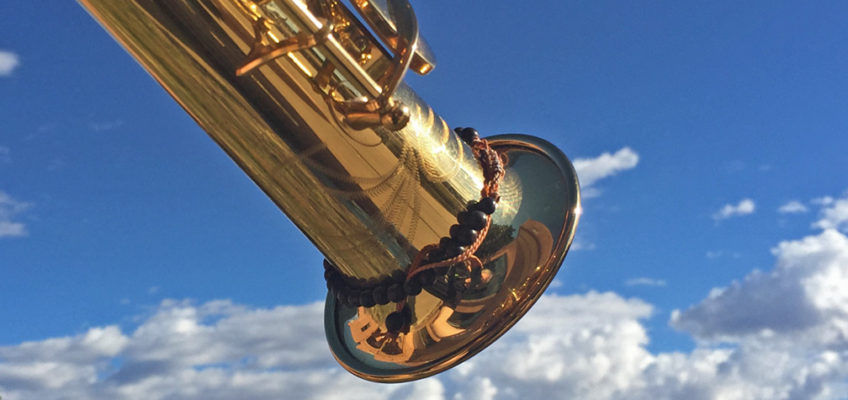I mentioned previously that early on I had a lot of issues with soprano saxophone pitch. I didn’t understand this at the time, but it would have been very unusual if I had not had any problems with pitch.
It’s physics. The smaller the sax, and therefore the higher the pitch of the notes it plays, the bigger the effect subtle changes in embouchure have on tuning. Because it’s so exacting, it takes a lot of practice to learn how to play a soprano in tune. And even then it may always be a little dicey.
Then there is the issue of the instrument itself. I eventually learned that “all saxophones” have a sharp middle D. I found that mine had a sharp middle D, and a less sharp Eb above it. And the low Ab and Eb tended to play flat. That’s my horn. I’ve played some others that were worse, and some that were better.
The other piece of the puzzle is that for accurate soprano saxophone pitch, you can’t simply blow all the notes the same and expect to play in tune. The higher you play, the more mouthpiece you have to take, and the more pressure you have to exert. So if you’re playing a fast passage that goes from low to high, or high to low, at least on my horn, at least some of the notes in the middle will be out of tune to some degree. That’s because you simply can’t adjust your embouchure that quickly. It’s an imperfect world.
Long Tones, Baby. One Key To Pitch
Any good sax player will tell you that the key to good sound is playing long tones. So I made it my business to play a lot of long tones. And I incorporated major chord arpeggios into them, so I could get the hang of playing in tune. All this was done in front of a tuner, and for a while I was doing this 30 – 40 minutes a day, as a long warmup. I’m currently [I was as of this post] about 18 months in, or about 1500 hours of practice, and I still play about 20 minutes of long tones every day. As a result, my sound is sweet, and I play in tune, sort of.


